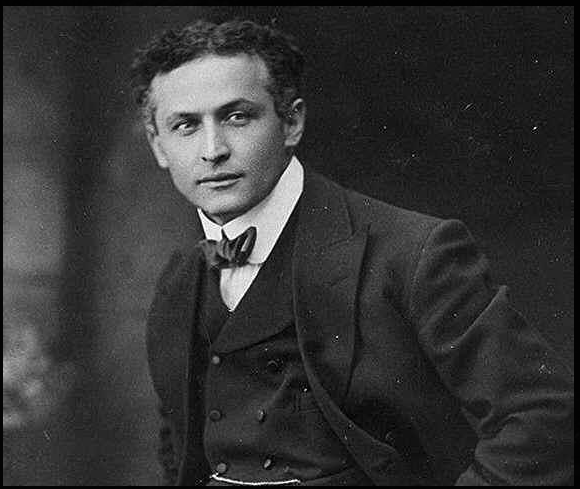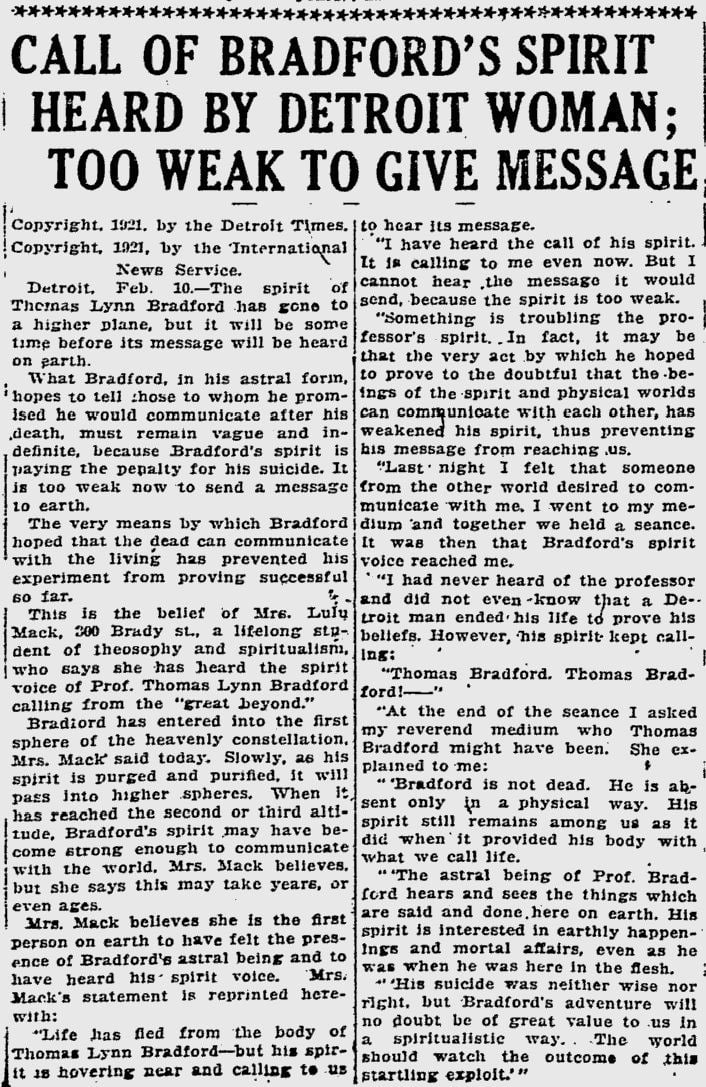Houdini's Last Séance and Thomas Bradford's End Experiment

It was Halloween night, 1936, and a crowd of 300 had gathered at the Hollywood Knickerbocker Hotel, anticipating an encounter with the spectral. This event was a final attempt by Bess Houdini to contact her deceased husband, the legendary illusionist Harry Houdini, who had died a decade earlier on Halloween. The séance was intended as a dramatic culmination of Houdini's complicated relationship with the spirit world.
Thomas Bradford's end experiment, while less famous, is an equally fascinating exploration into the afterlife. Bradford, an engineer and occultist, committed suicide in 1921, believing he could send a message from beyond the grave. Both events underscore the tension between scientific scepticism and spiritual belief, though they approached this dichotomy from different angles.
Harry Houdini
Harry Houdini, born Ehrich Weiss in Budapest in 1874, immigrated to the United States with his family four years later. His early life in Wisconsin under the guidance of his rabbi father didn’t hint at his future fame. Fascinated by the life of magician Robert-Houdin, Weiss adopted the stage name Harry Houdini and embarked on a career that would see him become the world’s most famous escapologist. His daring stunts, from escaping handcuffs while suspended over New York City to emerging unscathed from underwater confinements, captured the public's imagination.
Houdini’s wife, Bess, was his greatest partner. Married in 1894, they began their career together performing a séance act. This early exposure to the mechanics of spiritualist deception laid the foundation for Houdini's later scepticism. Despite a brief flirtation with spiritualism, Houdini came to view most mediums as frauds preying on the grief of the bereaved. His personal encounters with mediums, especially following the deaths of his father and mother, only solidified his disbelief. He found their tricks transparent and their promises hollow.
In the wake of World War I, as spiritualism gained popularity, Houdini's friend Sir Arthur Conan Doyle found solace in the belief that spirits could communicate with the living. Despite Doyle's persuasion, Houdini's experiences with mediums reinforced his scepticism. He exposed many fraudulent mediums, using his knowledge of magic to reveal their tricks. From the electrical wiring used by George Valiantine to the clumsy deceptions of Nino Pecoraro, Houdini was relentless. His investigations even debunked spirit photography, demonstrating how double exposures could produce ghostly images.
The most publicised confrontation was with Mina Crandon, a Boston socialite who claimed to channel her deceased brother. Despite initial support from some researchers, Houdini exposed her as a fraud during a séance, revealing how she used her feet to ring a bell purportedly moved by spirits. Scientific American, which had offered a prize for proven paranormal abilities, ultimately sided with Houdini, leaving Crandon discredited.
Houdini's crusade against mediums made him many enemies, including his former friend Doyle. The public animosity and predictions of his death by some mediums only intensified his resolve. After his death, Bess Houdini spent a decade seeking a medium who could deliver a pre-arranged code from Houdini, a final test he had set to prove the afterlife. Although psychic Arthur Ford claimed success in 1929, it was likely he had discovered the phrase from a biography, not through paranormal means.
On Halloween 1936, Bess held the last séance. Despite the theatrical atmosphere and careful preparations, Houdini did not make contact. The event, recorded and witnessed by many, ended in silence, marking the end of Bess's decade-long quest and the enduring mystery of Houdini's afterlife.
Thomas Bradford
Thomas Bradford, an engineer with a deep interest in the occult, embarked on his end experiment in 1921. Unlike Houdini, who sought to debunk spiritualism, Bradford aimed to prove it. His radical approach involved ending his own life to communicate from the beyond, a drastic measure driven by his unwavering belief in the afterlife.
Bradford's experiment was set against the backdrop of the early 20th century's fascination with spiritualism and scientific inquiry into the supernatural. Bradford collaborated with Ruth Doran, who would be his contact on the living side. Before his death, Bradford assured Doran he would find a way to communicate from the other side. He left detailed instructions and predictions about how he would send a message.
After Bradford's death, Doran claimed to receive messages from him, though these were vague and inconclusive. The experiment drew public attention and sparked debates about the ethics and validity of such extreme measures. Unlike Houdini's public and media-driven confrontations with mediums, Bradford's end experiment remained a more personal and philosophical inquiry. It lacked the theatricality of Houdini's exposes but highlighted the lengths to which some would go to prove the existence of an afterlife.
Bradford's legacy is less documented than Houdini's, and the results of his experiment remain ambiguous. However, his willingness to sacrifice his life for his beliefs stands in stark contrast to Houdini's methodical and public dismantling of fraudulent mediums. Both men, in their own ways, sought to bridge the gap between life and death, whether through exposing deceit or attempting communication.
The tales of Harry Houdini and Thomas Bradford represent two sides of the same coin. Houdini, the master illusionist, used his skills to debunk those he saw as charlatans, providing a rational counterpoint to the spiritualist craze of his time. Bradford, on the other hand, was willing to embrace the ultimate sacrifice to explore the possibilities of the afterlife. Both left behind legacies that continue to intrigue and inspire discussions about the intersection of science, scepticism, and spirituality.
Their stories, marked by dramatic events and profound personal losses, reflect the enduring human desire to understand what lies beyond death. Whether through the spectacle of a final séance or the quiet resolve of a personal experiment, Houdini and Bradford's quests remind us of the thin veil between belief and knowledge, and the extraordinary measures taken to pierce it.
You can listen to the episode The Last Experiment: Thomas Bradford's Quest For Proof With Sarah Blake by clicking the link.






















